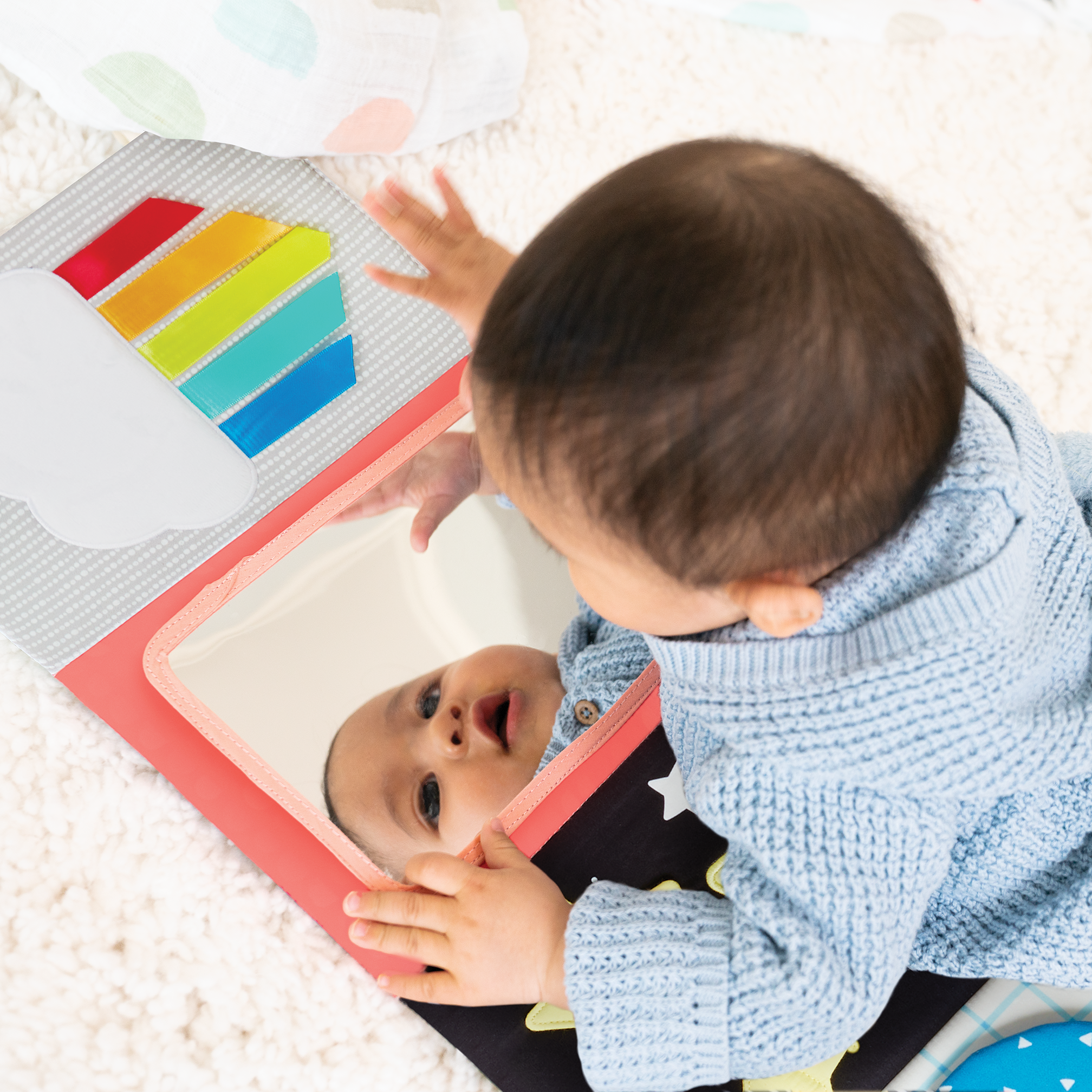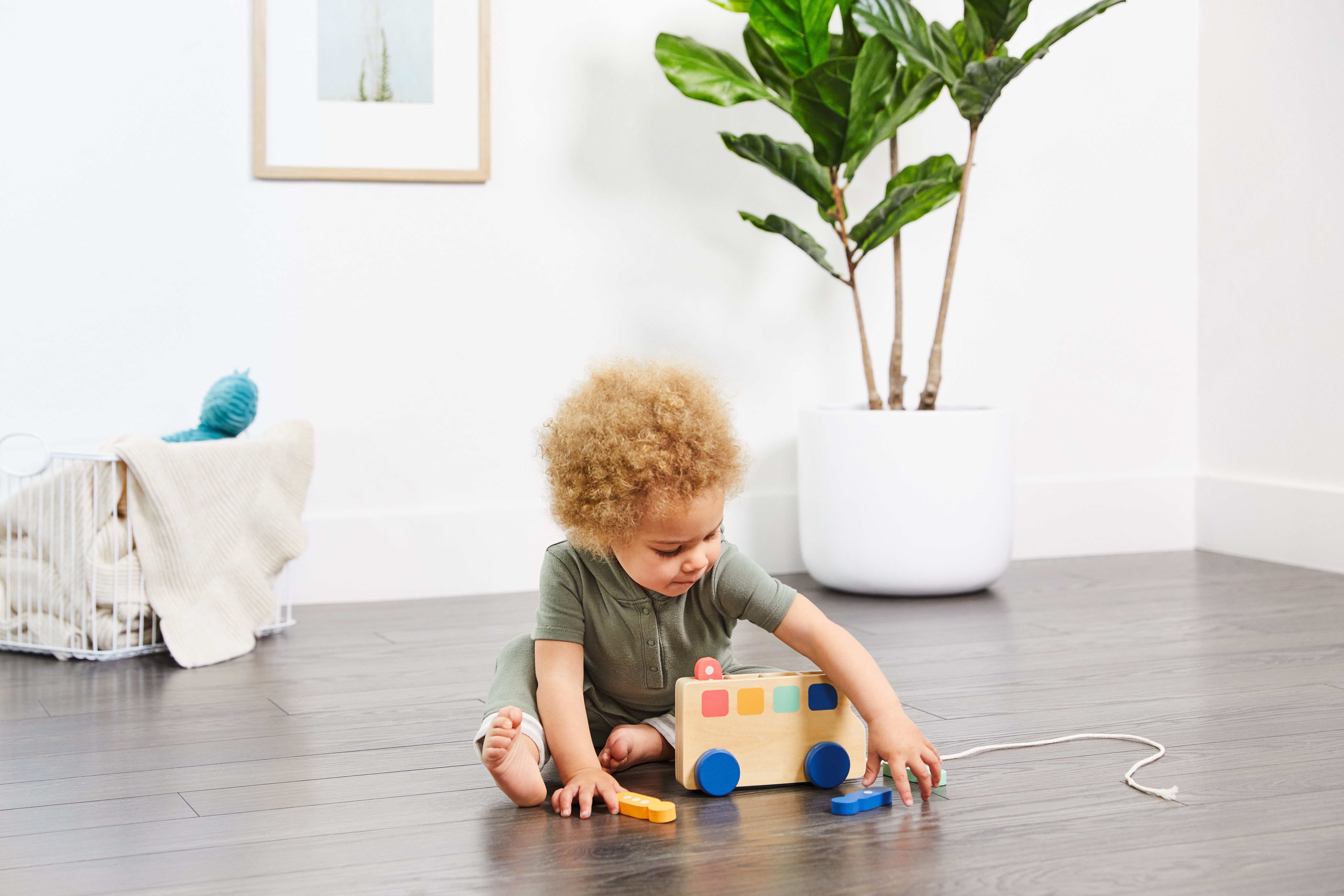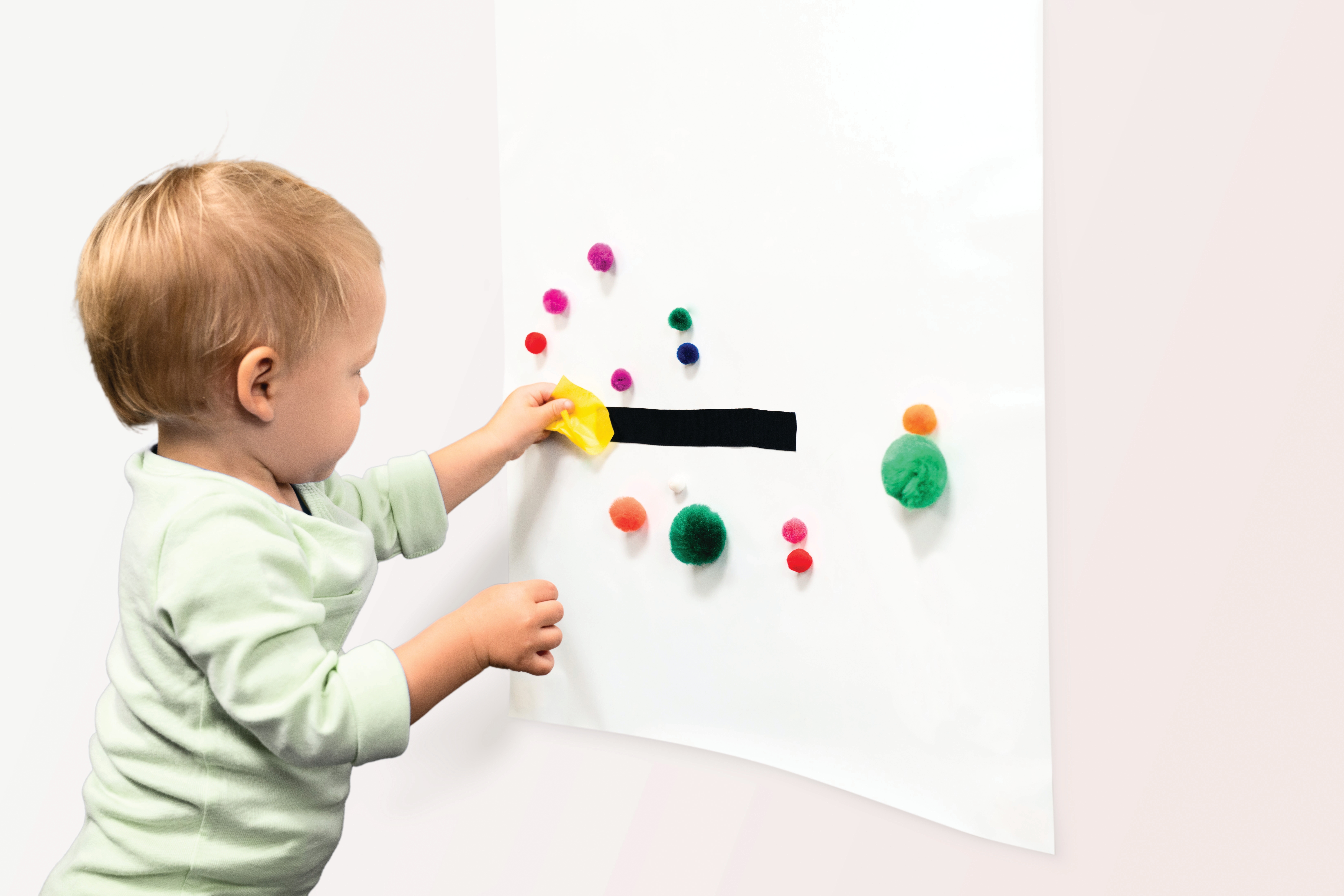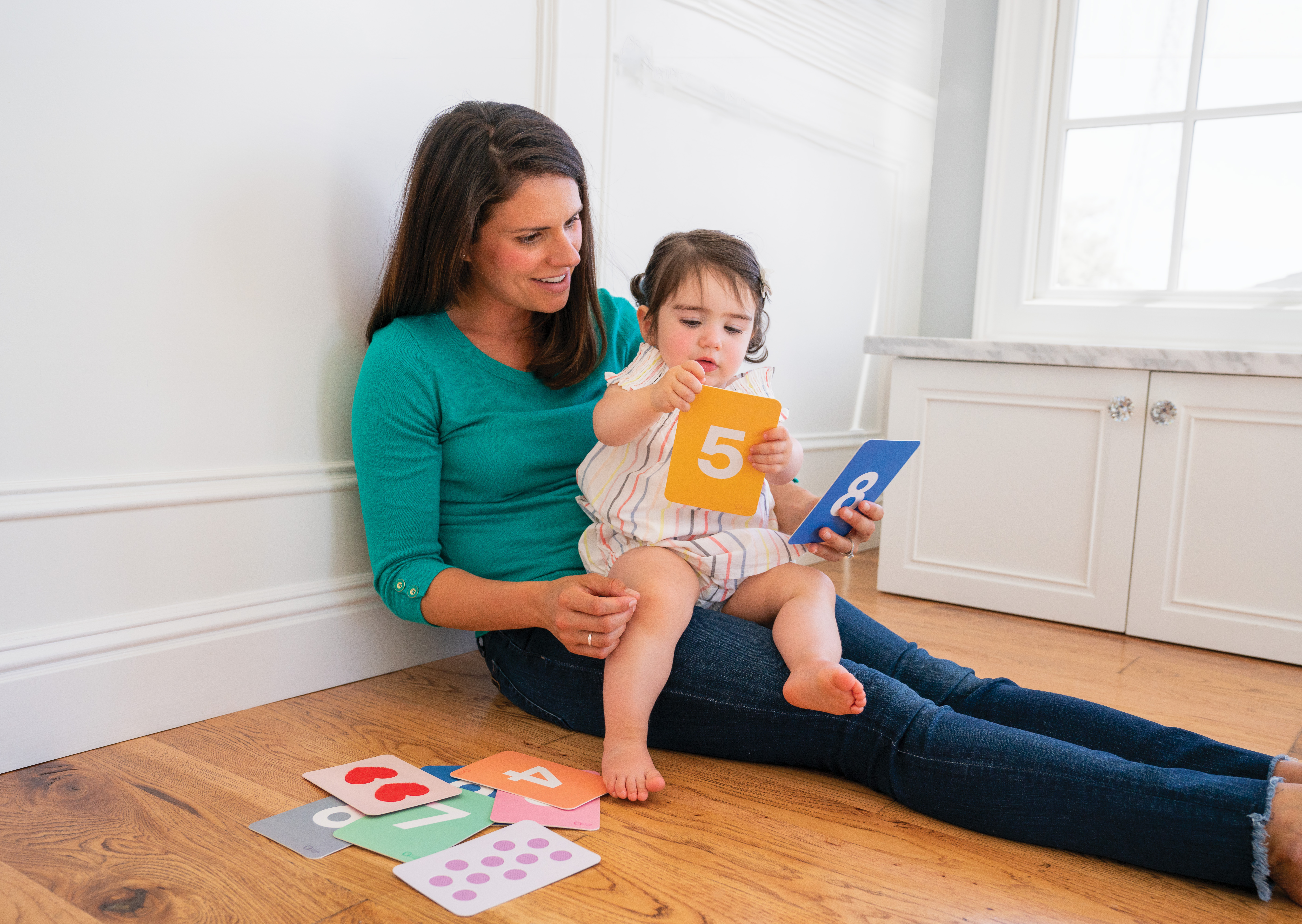1. Encourage gross motor skills.
Gross motor skills are the stuff of early childhood: walking, jumping, dancing to "Baby Shark" on repeat. These whole-body movements engage the large muscles in the arms, legs, and torso.
Ways to Play:

For infants, tummy time is the perfect way to nurture those gross motor muscles. Place your baby on their belly, and they’ll naturally lift their head and torso to see what’s around them. When they’re a little older, put a few toys slightly out of their reach to encourage them to move, stretch, and grab. Once they hit toddler age, get them pushing, pulling, and rolling with balls and wheeled toys. And once they’re even older and more active, encourage activities like fort-building and jungle gym–climbing to get their whole body moving and grooving.
2. Practice fine motor skills.
It’s not easy to get the small muscles in the hands and wrists to do what the brain tells them to. That’s why babies are hard at work from the start — using their hands to explore their bodies (hello, thumb!), other people’s bodies (hello, dad’s nose!), and eventually, the whole wide world. When we encourage babies to grab and reach, we’re helping them build the brain connections they need for fine motor mastery.
Ways to Play:

In year one, look for toys that draw your baby’s attention — like rattles or squeaky toys — and encourage them to get grabbin’. Once your baby can sit up, stacking toys and sorting boxes are a great way to hone those hand muscles. Or try a spirited game of peekaboo, which not only gets the hands moving but also teaches object permanence (the understanding that an object still exists even if you can’t see it). Once your little one is a clever, capable toddler, you can engage them with more complex fine-motor activities — painting, sorting, block-building, and more.
3. Develop language skills.
Whenever your baby hears you speak (even in utero!), they’re building connections in the left hemisphere of their brain, near where their auditory system is located. The more they flex those speech skills — chattering at you in cheerful gibberish or sounding out their first words — the stronger those brain connections will get.
Ways to Play:

When your baby babbles at you, keep up the chitchat by “talking back" — even if you're just narrating what you and your child are seeing and doing throughout the day. (The dog says woof. The car goes zoom.) You can also use nursery rhymes and songs to add some music to your language lessons. And of course, there's reading — one of the best forms of language play. Not only does your kid learn new words when you read to them, but they also love it when you act out the characters and get silly.
4. Build sensory skills.
A newborn’s brain develops 2 to 3 million connections /per second/. These connections create routes allowing sensory messages to reach the brain, opening your child up to a bold, beautiful new world. Help your child make the most of this period of incredible growth by nudging them toward a wide range of sights, sounds, smells, and more.
Ways to Play:

Whether you’re wowing your kid by blowing bubbles or gently tickling the bottoms of their feet, you’re actively helping them build their brain. Sensory play is limitless — and it’s a wonderful activity that engages other forms of learning too. Try touching and naming your baby’s nose, chin, and toes to connect touch with language. Or walk on different surfaces — from bubble wrap to crinkly tissue paper — to strengthen gross motor skills while engaging your child’s sense of touch. And of course, hugs and kisses are a winning way to pair sensory learning with the greatest lesson of all — the knowledge that your child is loved and adored.
